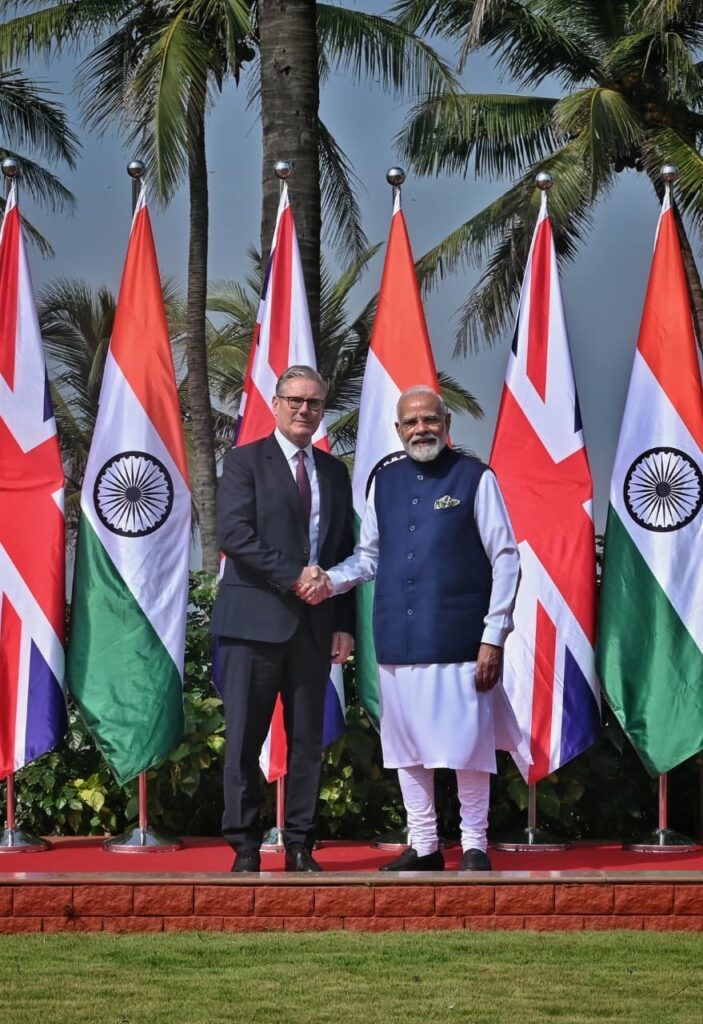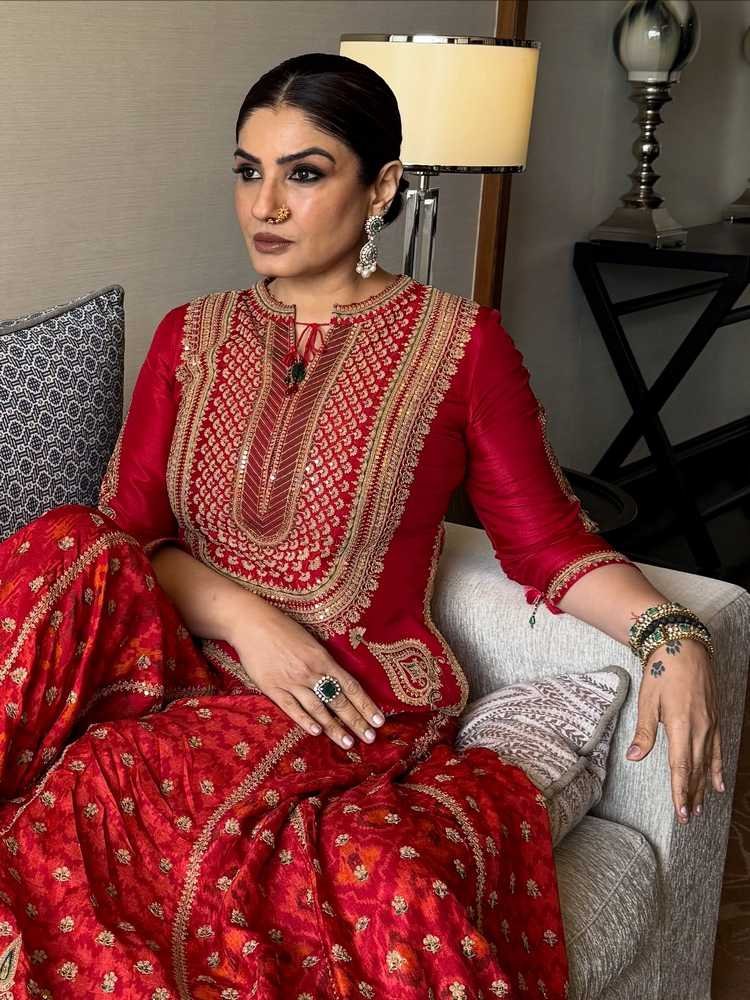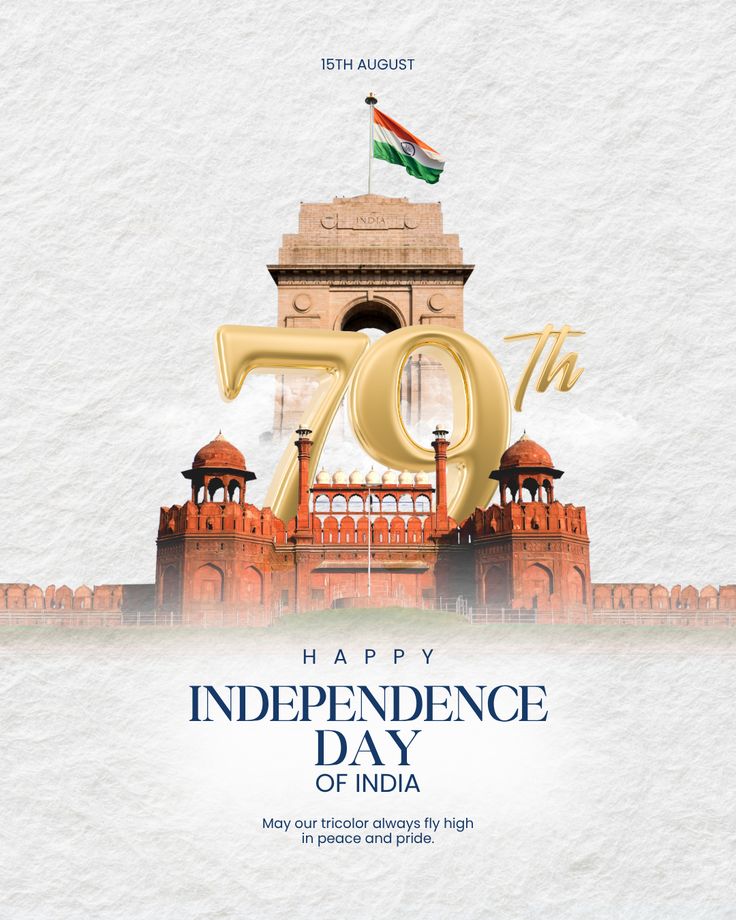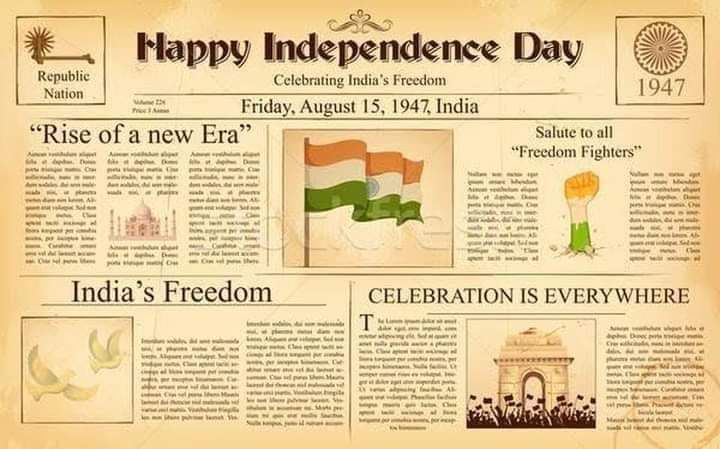In a rare moment that beautifully blended India’s artistic heritage with contemporary reverence for craftsmanship, Bollywood actress and Padma Shri awardee Raveena Tandon met Prime Minister Narendra Modi to present him with a magnificent Pichwai painting of Shreenathji in Vastra Shringar. The meeting, held at the Prime Minister’s Office, was not merely a ceremonial gesture—it was a symbolic celebration of India’s enduring devotion to divine art, spirituality, and the country’s extraordinary tradition of hand-painted storytelling.
A Meeting Rooted in Heritage and Devotion
Clad in a royal blue saree, Raveena Tandon radiated elegance as she stood beside Prime Minister Modi, who was dressed in his signature white kurta and Nehru jacket. Between them stood the mesmerizing Pichwai artwork, its intricate details shimmering under the soft lights of the room. The image depicted Lord Shreenathji lifting the Govardhan Parvat, a sacred motif in Pushtimarg tradition symbolizing divine protection and abundance.
This wasn’t just a painting—it was a piece of living heritage.
Tandon, known for her deep engagement with Indian crafts, culture, and sustainable design, chose to present this work through Claome, a platform dedicated to promoting Indian handcrafts and textile artistry. Her gesture was a tribute to the artisans of Nathdwara, Rajasthan—the birthplace of Pichwai art—whose hands continue to narrate centuries-old tales through color, texture, and devotion.
The Masterpiece That Took Six Months to Create
The hand-painted Pichwai artwork of Shreenathji in Vastra Shringar stands as a testament to India’s meticulous artistic legacy. According to the creators, the masterpiece took over six months to complete. Every stroke, every hue, and every embellishment was rendered with an extraordinary level of patience and precision—hallmarks of the Pichwai tradition.
This form of painting, which originated more than 400 years ago in the temple town of Nathdwara, was traditionally used as a backdrop behind the idol of Shreenathji (a manifestation of Lord Krishna). Over centuries, Pichwai evolved into an intricate devotional art form, characterized by elaborate detailing, symbolic motifs, and divine storytelling.
In the artwork presented to the Prime Minister, Shreenathji is adorned in rich attire—Vastra Shringar—surrounded by motifs of lotuses, sacred cows, and ritual vessels. Each symbol carries layered meanings: the lotus signifies purity and spiritual awakening, while the cows and vessels below represent abundance and service in Pushtimarg philosophy.
The Making: Craftsmanship Beyond Canvas
What distinguishes this piece is not just its visual splendor but the process behind it—a process that bridges tradition with artistry. The artwork was created on starched cotton fabric, traditionally prepared by artisans with multiple layers of natural starch to ensure both durability and a smooth surface.
The artists used natural stone pigments, organic colors, and pure gold foil, a practice that lends the painting its ethereal radiance. The pigments—derived from minerals, shells, and herbs—echo the sustainable principles that Indian artisans have followed for generations. Every inch of the painting is infused with intention: the shading, the texture, and even the smallest dot carries the essence of devotion.
As described by the Claome team, “Every detail, from the gold highlights to the soft pastel shading, has been executed with ultra-fine brushes and deep meditative focus.” The painting, therefore, is not only a visual offering but a spiritual practice—a form of Bhakti (devotion) rendered through color.
Raveena Tandon: From Cinema Icon to Cultural Ambassador
While Raveena Tandon is best known for her acclaimed film career, in recent years she has also emerged as a passionate advocate for Indian heritage, crafts, and sustainability. Her collaboration with Claome reflects her ongoing efforts to highlight traditional Indian artistry in contemporary spaces.
Speaking about her motivation behind choosing this artwork, Tandon noted her “deep admiration for Indian craftsmanship”, emphasizing that such works of devotion embody patience, precision, and cultural reverence. Her gift to the Prime Minister was thus more than symbolic—it was a gesture that honored India’s artisan communities and their tireless contribution to preserving the nation’s cultural identity.
Over the years, Tandon has been actively engaged in initiatives promoting eco-conscious living, rural craftsmanship, and heritage conservation. Her visit to present this painting signifies a natural extension of her cultural advocacy—merging her identity as an artist, environmentalist, and patron of traditional crafts.
Prime Minister Modi and His Connection to Indian Handicrafts
Prime Minister Narendra Modi, known for championing India’s indigenous traditions and the “Make in India” movement, has consistently emphasized the importance of promoting local artisans and traditional industries. Under his leadership, several initiatives—such as “Vocal for Local” and “One District, One Product (ODOP)”—have spotlighted regional crafts and artisanal skills.
By receiving the Pichwai artwork, Modi once again highlighted India’s reverence for its cultural roots and creative economy. The Prime Minister’s office has long been adorned with artworks representing India’s diverse heritage, symbolizing his commitment to celebrating craftsmanship that reflects both spirituality and sustainability.
The presence of the Pichwai painting of Shreenathji in the Prime Minister’s collection now stands as a visual testament to India’s living traditions—where art is not merely decorative but deeply devotional.
Understanding Pichwai: The Art of Devotion
To fully appreciate the significance of this gesture, one must understand what Pichwai art represents in the broader context of Indian heritage.
“Pichwai,” derived from the Sanskrit words ‘pichh’ (back) and ‘wai’ (hanging), refers to the intricate hand-painted cloths that traditionally serve as backdrops in Shreenathji temples. These artworks are not just paintings—they are visual scriptures depicting episodes from Lord Krishna’s life, seasonal festivities, and divine adornments.
Each Pichwai painting is a narrative that unfolds through symbolism:
The Lotus: Signifying purity and spiritual awakening, it also represents the blooming of the soul in devotion.
The Govardhan Parvat: Symbolizes divine protection, as Krishna lifted the mountain to shield devotees from torrential rains.
The Cows: Represent service, abundance, and the sacred relationship between humanity and nature.
The Ornaments and Textiles: Each motif—crafted with gold, silver, and natural dyes—mirrors the divine grandeur of Shreenathji.
Pichwai paintings are also known for their seasonal adaptations. Different themes mark festivals such as Janmashtami, Sharad Purnima, Annakut, and Holi, with artists modifying the deity’s attire and surroundings to reflect the time of year. This dynamic nature makes Pichwai both timeless and ever-evolving—a perfect metaphor for India’s living spiritual tradition.
Claome: Reviving India’s Artisanal Legacy
At the heart of this presentation is Claome, the platform through which Raveena Tandon collaborated to curate this divine artwork. Claome has been steadily building a bridge between India’s master artisans and modern audiences. By emphasizing ethical sourcing, hand-painted artistry, and sustainable production, Claome celebrates craftsmanship as a living art rather than a dying trade.
Each creation under Claome’s banner carries a story—a lineage of artisans, a tradition of techniques, and a devotion to preserving cultural authenticity. The Pichwai presented to the Prime Minister represents one such narrative of dedication, patience, and spiritual artistry.
The Symbolism of Vastra Shringar
The particular form of the painting—Vastra Shringar—depicts Shreenathji adorned in resplendent garments and jewelry. In Hindu tradition, Shringar refers to the act of adorning the deity, an expression of both love and service. The act of dressing the divine is considered a sacred ritual, reflecting the intimate relationship between the devotee and the Lord.
In this painting, the Lord’s attire and ornaments are rendered with meticulous gold detailing and pastel tones, blending vibrancy with serenity. The gentle expression on Shreenathji’s face and the delicate floral background together evoke an atmosphere of divine grace and tranquility.
The artwork thus embodies seva—devotional service—where each brushstroke is an offering, and each pigment is imbued with reverence.
A Testament to Patience and Precision
The creation of such a masterpiece demands an extraordinary level of discipline. Artisans often work long hours under natural light, using brushes made from squirrel hair to achieve the finest detailing. The painting process is deeply meditative—an act of spiritual practice as much as artistic creation.
Every inch of the artwork reflects the ethos of patience—a quality that Raveena Tandon herself highlighted in her remarks. “It’s a true testament to the patience, precision, and reverence that Pichwai art demands,” she said. Indeed, the slow, deliberate pace of this artistry stands in stark contrast to the rapid digitization of modern life—reminding us that true beauty often takes time.
A Broader Cultural Message
Beyond its immediate aesthetic and devotional appeal, Raveena Tandon’s gesture carries a broader cultural significance. It underscores the need to preserve India’s traditional art forms, many of which face challenges due to modernization and lack of patronage.
In gifting a hand-painted Pichwai to the nation’s leader, Tandon has symbolically championed the cause of India’s craftspeople—many of whom live in rural or semi-urban regions and rely on generational skills passed down through families.
Her gesture sends a powerful message: that India’s future lies not in abandoning its traditions, but in integrating them with contemporary consciousness.
Art as a Form of National Pride
Moments like these—where art, spirituality, and leadership intersect—carry immense symbolic value. The image of the Prime Minister standing beside an artwork that embodies centuries of devotion and artistic brilliance resonates far beyond the confines of an official meeting. It tells the story of India’s continuity—of how its cultural soul remains vibrant even as the nation strides confidently into the future.
This event also serves as a reminder of how art functions as soft power—a means of connecting India’s spiritual identity with global appreciation. As Indian art and textiles gain renewed international attention, gestures like Tandon’s become cultural touchstones—showcasing the beauty and depth of Indian craftsmanship to the world.
A Sacred Offering of Art and Devotion
Raveena Tandon’s presentation of the divine Pichwai painting of Shreenathji in Vastra Shringar to Prime Minister Narendra Modi stands as a luminous example of art transcending its material form. It is an offering of devotion, culture, and craftsmanship—a confluence of the spiritual and the aesthetic.
In an age where mass production often overshadows artistry, this event serves as a tribute to the slow, sacred art of creation. The painting itself—glowing with organic pigments and gold foil—becomes a metaphor for India’s inner light: resilient, radiant, and rooted in faith.
As the image of Modi and Tandon standing beside the artwork circulates widely, it does more than capture a meeting—it captures a moment of India honoring its own soul.
Related News: Read More




